-
Posts
242 -
Joined
-
Last visited
-
Days Won
1
Content Type
Profiles
Forums
Gallery
Events
Blogs
BMT Wiki
Collections
Store
Posts posted by Whiskymack
-
-
On 4/18/2020 at 2:57 AM, Prowrench said:
1970 Autocar Cummins 335 Roadranger 13 and Hendrickson suspension Holmes 750 extended boom Just bought it today only pulled out of service in January of 2019 because owner retired. The owner who is 81 was forced to retire because he has extreme difficulty getting in and out of the truck since he broke his neck at age 79.He's a tough old dude and a pleasant man to converse with.
Great looking truck and a nice project to get into.. These are my favourite Autocars. I have one on my list of to do model projects. I have already 3D printed a hood for it but have got a bit hung up on how the front end goes together. Would you be able to take some pics with the hood up? I'm trying to get a look at the frame horns and Radiator mounting but there are so few of these around now that getting any detai is almost impossible.
-
23 hours ago, j hancock said:
Some pics that may help?
Yes, that's just what I was looking for. Thank you.
-
All the 771's have this modification so it must have been factory. I guess that they were so few in number that it was not economical to produce a longer hood so they came up with the cowl extension instead. You know me, I like figures so I was hoping to find out exactly how many inches were added!
-
 1
1
-
-
Does anyone know the BBC dimension for the Detroit Dozen RS771? It's longer than the standard RS700 and you can see there's an infill between the cowl and hood.
I know these are rare beasts but I was hoping that maybe someone has access to one and could measure that extra cowl infill or that there are some figures available somewhere.
Another model project.
-
https://www.truckpaper.com/listings/trucks/for-sale/192800269/1971-mack-rs700l
Beautiful! Price tag to match.
-
 1
1
-
-
8 hours ago, kscarbel2 said:
The 2nd gen RW with rectangular headlights was known internally as the RWI model.
Sorry, I think I muddied the waters because I thought we were talking about RW 1 and RW 2 models whereas we are really talking about RWL/S and RWI.
Perhaps the 2nd Generation Super-Liner should have been RMH!
So, to summarize;
Hayward closed in 81 and all Western model production moved to Macungie or elsewhere.
RWS/L Super-Liner continued with split frame.
WS/L Cruise-Liner with split frame continued with improvements and cosmetic changes like new grill to match Super-Liner.
RS/L Value-Liner continued as was.
WS/L Cruise-Liner discontinued in 83, replaced by brand new design MH.
RWS/L Super-Liner discontinued in 85 replaced by RWI Super-Liner using MH frame.
RS/L Value-Liner discontinued in 87 marking the end of a 2 decade distinctive Western product run.
Back to R700's, 865's, 866,s 1000/1005's and E9's. Vlad I see what you mean about the valve covers. It also means that the whole cylinder head casting is a bit different too.
Found this video whilst comparing.
-
17 hours ago, kscarbel2 said:
You are bringing back memories today. That brochure has a Value-Liner you showed (incorrectly identified as RD), as well as a pre-facelift axle-forward RD with Value-Liner styling. Customers and dealers said it was too heavy, so we didn't sell many. We sold far more post-facelift Western Contractors.
Glad to bring back memories. I have only ever come across two of those pre facelift Western Contractors; the one in the brochure and the other on this site:
-
6 hours ago, Jamaican Bulldog said:
What id the V8 mack that was in the R700? The valVe covers looked like E9 but as discussed it wasn't in it. I build models and want to make sure i get it right.
I don't know much about the detailed differences but I think late production 865's and 866's may have looked similar to the E9. The obvious difference is that the E9 had Chassis Mounted Charge Air Cooling which meant there was an aftercooler in front of the radiator along with the piping that went with it.
Can we see some models?
-
22 minutes ago, kscarbel2 said:
No, the RD Western Contractor did not exist until after the Value-Liner was discontinued.
Misleading publicity from Mack! I took a look at that brochure again. There is a picture of an unbadged Value-Liner labelled as an RD but later in the brochure there is a correctly labelled Western Contractor RD! The brochure is dated 87 so the Value-Liner must have gone by then.
Here's a link to it but I can only open it with google Chrome. Firefox or Edge don't seem to like it.
Photo: MackConstr87-04 | Mack Construction Trucks 1987 album | modeltrucks25
-
1 hour ago, kscarbel2 said:
I recall we discontinued the Value-Liner thinking the face-lift RD would be an acceptable replacement for both east and west. Our dealers didn't agree and complained. So we created the face-lift RD "Western Contractor" as a replacement for them, for the discontinued Value-Liner. Later, we made the Western Contractor specs optional on the standard RD and discontinued the Western Contractor as a stand alone model.
Yes, I've come across the Western Contractor. Wasn't it an RD with the old hood and a lookalike but slightly smaller Western style grill? I remember seeing a Mack construction brochure from the 80's which had both the Western Contractor and the Value-Liner in the lineup so there must have been a period when both models were available.
-
24 minutes ago, kscarbel2 said:
That's a good question. I don't recall the E9 being fitted to R-700s. By that time, the R-700 was primarily for Cummins fitment to customers like Ryder, plus the rare CAT order.
Thats the impression I had got. I would have thought it would have involved too much redesign on a product that had effectively been superceded by the Super-Liner.
Incidentally, if RW1 production went to Macungie in 85 it would must have been quite short lived as I thought that the RW2 emerged the following year. It's an interesting period because there seemed to be a bit of product consolidation going on with the demise of Hayward line. The RW2 was a complete redesign with much more of an Eastern pedigree whilst retaining the looks of the old model. Am I right in thinking the Value-Liner also went to Macungie but was discontinued in 87?
-
31 minutes ago, kscarbel2 said:
With the RWI Super-Liner in production at Macungie for 1985, we felt that continued production of the R-700 was redundant.
That makes a lot of sense. Did the R-700 ever get the E9? It seems like there wasn't much room in there for CMCAC without a redesign of the front end.
-
 1
1
-
-
Just curious about the end production date for the R700. It got a bit of a design revamp in the mid 1970's as we've discussed elsewhere here but it would seem to me that after the introduction of the Superliner there must have been a bit of duplication. The Western RS/RL 700 was discontinued at this time but what about the Eastern R700? All of the larger engine options such as Cummins, Cat, Detroit, 865, 866 and later E9's were available in the Superliner so the R700 would seem a little superfluous in that respect.
-
12 hours ago, Vladislav said:
I can say you digged out a very interesting detail. Alastair must be excited
Sad to say I am! I've followed this thread with interest although I'm a bit out of my depth when it comes to frame depth. It is interesting to see how engineers managed to get standardized parts to fit not standardized frames with spacers and repositioning but it must open a whole can of worms when it comes to rebuilding with donor parts.
I had noticed the difference between the frame horns before. The ones on the 88 R and 86 RD go on the outside of the frame rails whereas the ones with the towing eyelet at the bottom go on the inside of the frame rails and I believe were an earlier design. I think they stopped using them on the standard R model around about the time that the corporate bumper came in although they kept them on the U series for a few more years and you can see cutouts at the bottom of the corporate bumper to access the towing eyelets. I've neverseen these cutouts on an R. Before the corporate bumper, the eyelets were below the bottom edge of the shallower bumper.
The radiator set up is also a whole topic in itself. Keith pointed out that the radiator mount bolted to tabs on the eyelet frame horns. I think that the engine sat on a cradle which bolted to the back of this mount. When the externally mounted frame horns came in the radiator mount was a kind of wide flattened u shaped crossmember which looks like it bolts to the inside of the frame rails possibly using the same bolts that attach the frame horns. Again the engine was held in a cradle that bolted to the back of this. In both cases the radiator sat quite high.
In the Econodyne era the R600 got the tall radiator that dropped down between the frame rails and was held by brackets on the inside of the rails. The engine was held in an asymetrical u shaped crossmember which was mounted behind the radiator. I'm not sure if this was all to do with introduction of CMCAC.
I didn't know that the eyelet horns and short radiators were still beng used in 1985. Was a 1985 RD685 still Maxidyne powered with no CMCAC and in that case did the non air cooled Maxidyne 675 stay in production alongside the Econodyne range?
This also leads me to start asking questions about the R700 but I'll open a new thread rather than drag this one too far off topic.
-
 2
2
-
-
On 5/5/2020 at 10:26 PM, Vladislav said:
All in all there's plenty of points in a Mack chassis which look simple at the first moment but when you start figuring it turns out many sized and distances differ between the models and production years. In many cases that's not really much but require clearing if you want to provide a correct work.
You are right. There were so many small changes made over the production run of each model. Just looking at the Western R's there were a variety of cab mounts, and other frame fittings over the years. This is what really piques my interest; finding the design differences and trying to work out the logic behind them.
I compared some Valueliner pics, pre and post Econodyne. Difficult to know exactly how the extra space for the aftercooler was achieved but this is what I think they did:
Moved radiator back a fraction
New hood hinge to push hood forward. (A lot of later Valueliners had a gap of about an inch or so between hood and cowl. I always thought this was to allow a bit of travel for air ride cabs but perhaps it was because the hood got moved forward)
Possibly a spacer between bumper and frame horns to push bumper forward but very hard to tell from photos. Would need actual trucks and a ruler!
-
 1
1
-
-
To answer my own question it looks like the hood was moved forward based on an '85 Valueliner RS600L spec sheet. The bumper to front wheel centre is given as 29.75 inches whereas it was only 28 on the 70's specsheet. I don't know if the same applied to the Eastern model but it would seem a lot easier to me to extend the bumper mounts and hood hinges than move the cab back.
-
 1
1
-
-
11 hours ago, Vladislav said:
Mack added 1 inch to the rear edge of R600 hood to accomodate the chassis mounted aftercooler. You can see the difference if look at a hood side behind the rear of fender. After 1982 there's a section of fiberglass prolonging the hood side rearwards to the cab cowl. And pre-82 (shorter hood) doesn't have it and ends right along the fender curve. Once i asked a question on here and got an answer of pre-82 hood length (total?) was 53-3/8" and after 82 it became 54-1/4"
I see what you mean Vlad. I'd always assumed the extra was added to the front end but it was probably easier to add to the back end. I'm now wondering if they moved the cab back or moved the hood forward.
-
 1
1
-
-
22 hours ago, 85snowdog said:
Thanks for the explanation Whiskymack. It sounds logical to me. To help reinforce what you said, I will add some pics. You can see clearly, the bottom of the rad tank is visible without the grill, and I also added a pic to show how close the grill is to the shutters . Just out of curiosity I measured, and the R700 grill opening is 2.5 inches wider than the R600 opening. I also have a pic of an R600 with rad shutters. You can see that the hood covers the rad tank .
Thanks for the pictures Keith. They really show how little space there is between the shutters and the hood. This seems to be the case with the R600 as well. I think that when the Econodyne engines came out with the charge air cooling Mack added an inch or so to the front of the hood to allow space for the intercooler on the front of the radiator.
-
 1
1
-
-
- Popular Post
- Popular Post
I think I might have the answer to this.
Refer back to this thread:
When Mack brought out the Higher mount R700 in the 70's they must have kept the same radiator as on the earlier models. This meant that the lower edge of the radiator top tank became visible at the top of the opening in the hood and the only way to disguise this was to apply a grill. I dont know the exact date of the change but many of these R700's were Cummins powered and may still have had shutters on the radiator. Whatever the case it looks like there is very little space between the front of the radiator and the hood meaning that any grill would have to go on the outside of the hood, tipping with the hood, rather than being mounted to the radiator and staying put when the hood was tilted. Mack already had a grill on the F model so it probably made sense to use this but this grill is dished inwards so it would have clashed with the front of the radiator. The solution was to apply the raised rib or pedestal around the grill which Vlad talks about as this would have brought the grill further forward. You'd have then thought that the same grill would have been applied to the R600 for design continuity but I don't think this happened in the US although in Australia, both R600 and R700 models had the F model grill from sometime in the 80's.
All guess work base on looking at photos so feel free to shoot me down.
-
 3
3
-
-
1 hour ago, Ditchdiggerjcf said:
I disagree. I think the RL/RS are the lookers of the litter. I admit to being biased.
I'm with you on that. The RS/RL's were definitely lookers. I think Hayward came up with a better solution to the fender/tyre gap with the lower mounted fenders on the later Western Hood. The deeper fender on the Eastern models looks a little bit awkward in my opinion but I still think that, overall, the hood sitting higher was an improvement and actually brought the Eastern models closer to the Western in terms of appearance. Still curious as to why Hayward offered it's long hoods with 6 cylinder Mack motors while the Easterns only seemed to come with Mack V8's or proprietary motors.
-
 1
1
-
-
On 4/12/2020 at 8:09 PM, Rob said:
Some, but not all were RD series. If you look at the gap between the fuel tanks and cab rocker panel as well as seeing the bottom radiator tank bolts; dead givaway to raised cab. Another clue is the front cab mount insulator being completely visible.
The hood is different too. It has deeper fenders; the top of the wheel arch is roughly in line with the centre of the headlights on this hood but is much closer to the top of the headlights on the shallower hood. I don't think this is down to R or RD series because I think Mack changed the R700 design sometime in the mid 70s so all R700's from this point had the raised cab and deeper fenders. I've attached some scanned spec sheets for a 1970 R700 and a 77 R700. The cab height above frame is 61.3 inches on the 70 model and 65.2 for the 77. (This compares to 66 for the RS trucks). My guess is that as the number of horses increased so did the need for greater cooling and the raised cab perhaps allowed for bigger rads and better airflow. Some Australian trucks have had the cabs raised even further to this end. I may be wrong though! I also noticed that all the engine options for both 70 and 77 are Cummins, Detroit, or V8 Mack with no 6 pot Macks. Does this mean that R700's were not offered with 6 cylinder macks because the RS700's definitely were? I think I must have lifted the 77 scan from this site at some point so apologies and thanks to whoever posted it originally.
-
 2
2
-
-
On 4/12/2020 at 12:02 PM, kscarbel2 said:
The concept behind the insulated spring mounting arrangement is rooted back to Mack Trucks chief engineer and vice president Alfred Masury.
------------------------------------------------------------------------------------------------------------------
One of the many famous achievements of the Masury-led research and development department of the International Motor Company was elaborate experimentation in the early 1920s to measure the effects on tires and suspension systems of both pneumatic and solid-tired trucks when run at speed off an inclined ramp. The project originated from Masury’s desire to investigate the attributes of the recently introduced Belflex composition rubber spring shackle. Five Mack trucks ranging in capacity from 1-1/2 to 5 tons were driven at speeds of 15 to 18 miles per hour up a 1-1/2 foot tall ramp, during which time the effects on the tires and suspension systems were recorded utilizing an advanced new “Novograph” motion picture camera capable of taking pictures at a rate of 144 frames per second. Given the ability to review the video test results in slow motion, the Masury team developed and patented the Mack Rubber Shock Insulator in 1921.The technology was first utilized on the AB, a cushion connection between the spring ends and chassis. Mack’s use of live rubber cushioning technology extended over the 1921-1927 period to engine, transmission radiator steering gear and cab mounting.
As pneumatic tires for medium and heavy trucks at this time was still under development, the fitment of Mack’s Rubber Shock Insulator technology to solid tire trucks greatly prolonged component life by damping harmful shock and vibrations.
The potential of Mack’s Rubber Shock Insulator technology was so great that the International Motor Company formed the Rubber Shock Insulator Company in January 1922. Thru licensing agreements, Mack’s Rubber Shock Insulator technology was used by Chrysler, Peerless and Yellow Cab (Yellow Coach Manufacturing Company).
Always thinking outside the traditional box, Alfred Masury and colleague Emil C. Fink jointly patented a shock-insulated railroad track design, an advanced rail fastening system for attaching rails to railroad ties (http://www.freepatentsonline.com/1619028.pdf).
https://www.bigmacktrucks.com/topic/39563-mack-remembrance-–-alfred-fellows-masury/
Sorry, Getting in a mess with the multiquoting!
Masury sounds like quite an individual! I think It's time for a re-read of Montville.
It looks like the rubber insulated spring mount stayed in production for a long time if it was still being used on the C series in 1963. Was it offered as an option alongside the collar and pin and standard shackle or was it replaced by these?
Here's a picture of the hanger on the above C series. It looks pretty much the same as the one in Vlad's picture.
-
On 4/3/2020 at 6:34 AM, harrybarbon said:
a red C model with tray body with canvas cover (European style) shown at 2014 Amsterdam truck show with an E9
Seen in the UK in 2013



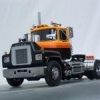
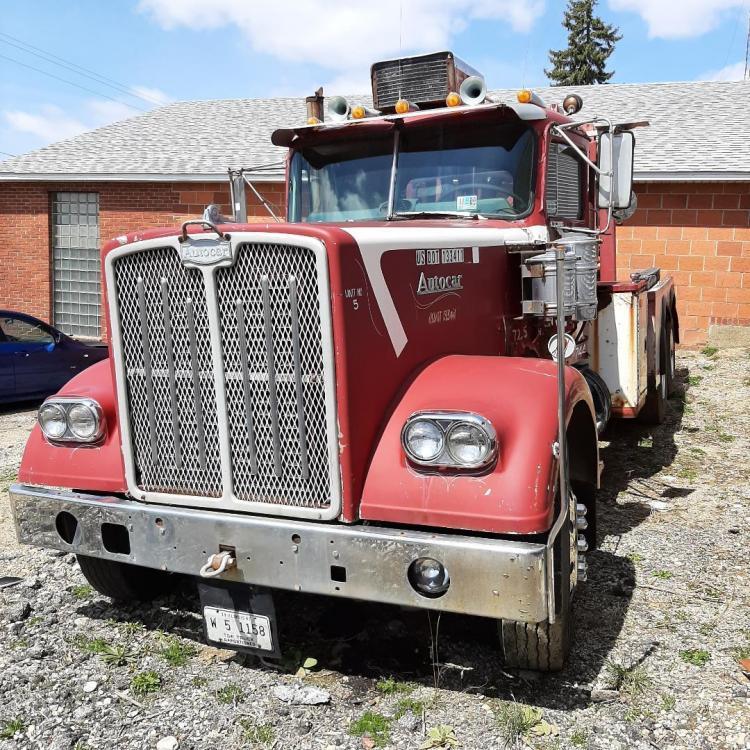
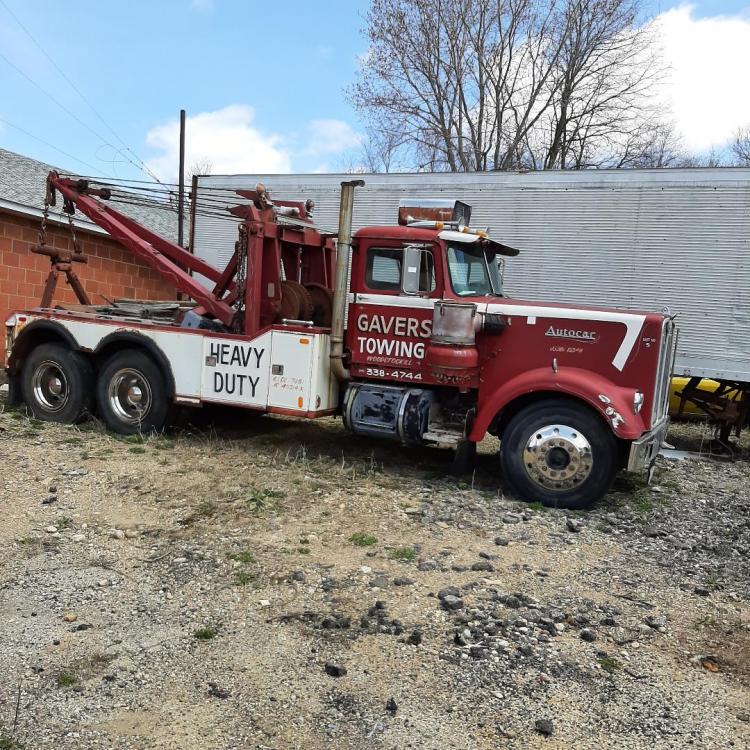
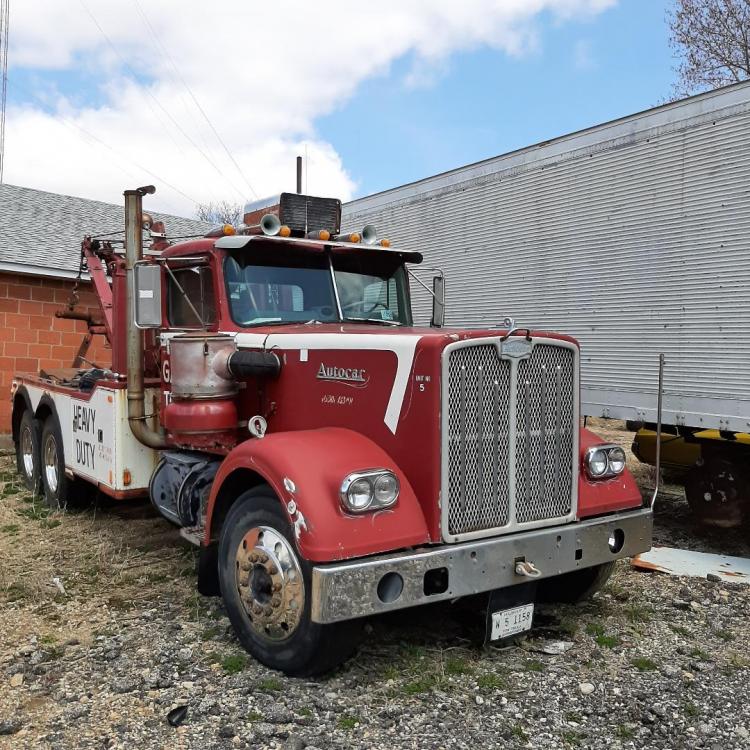
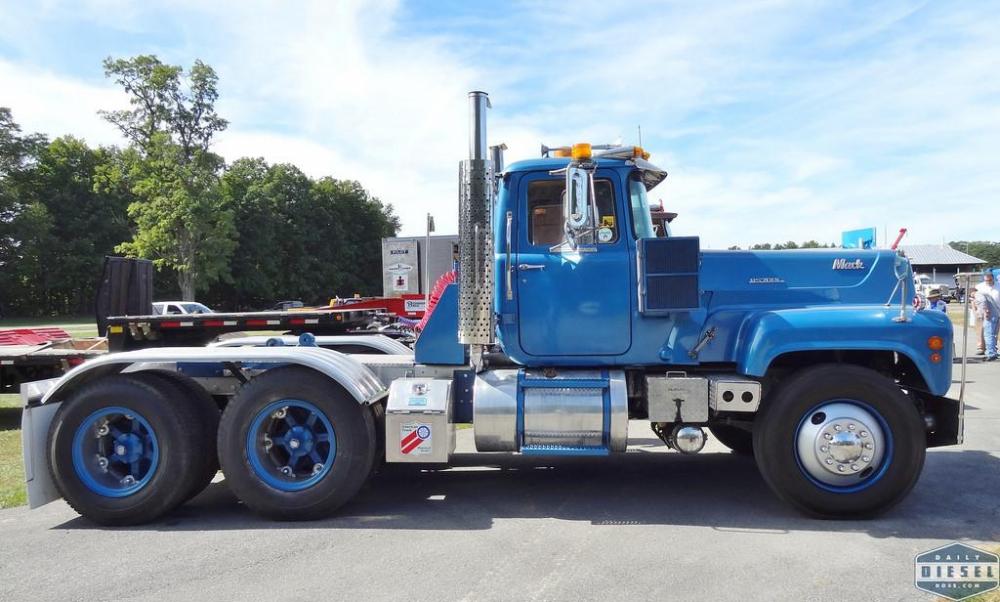
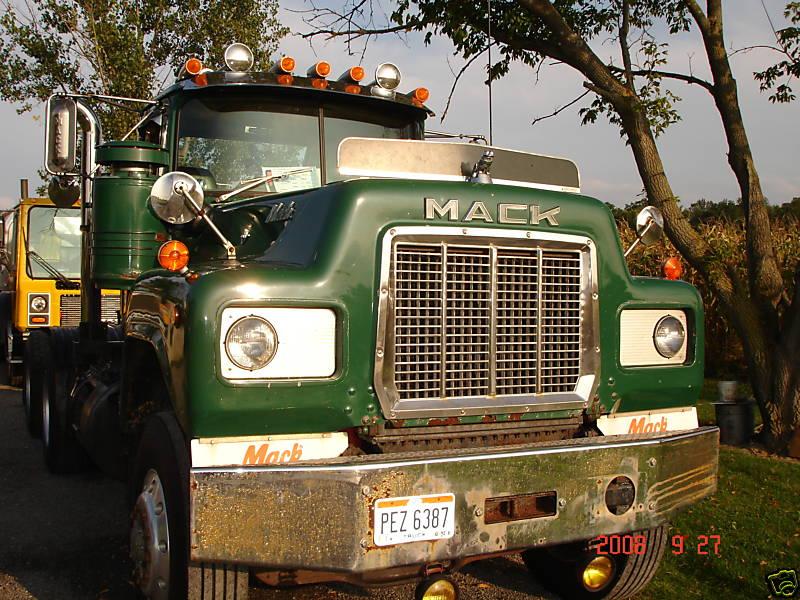
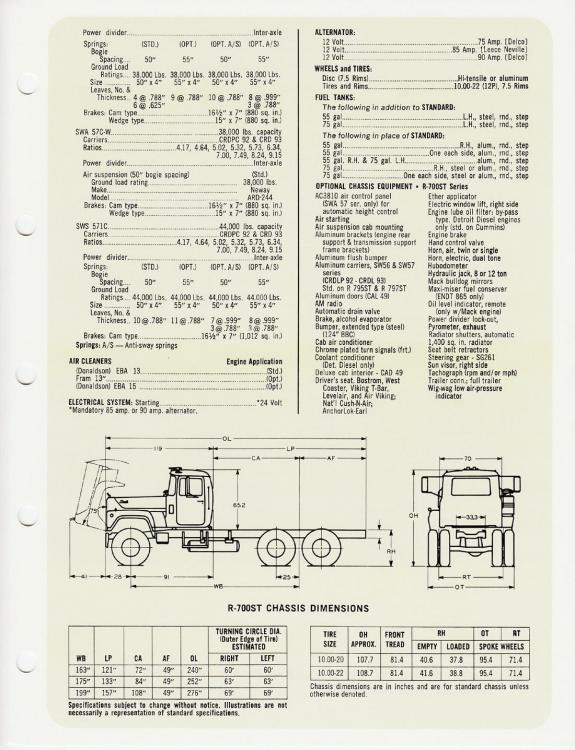
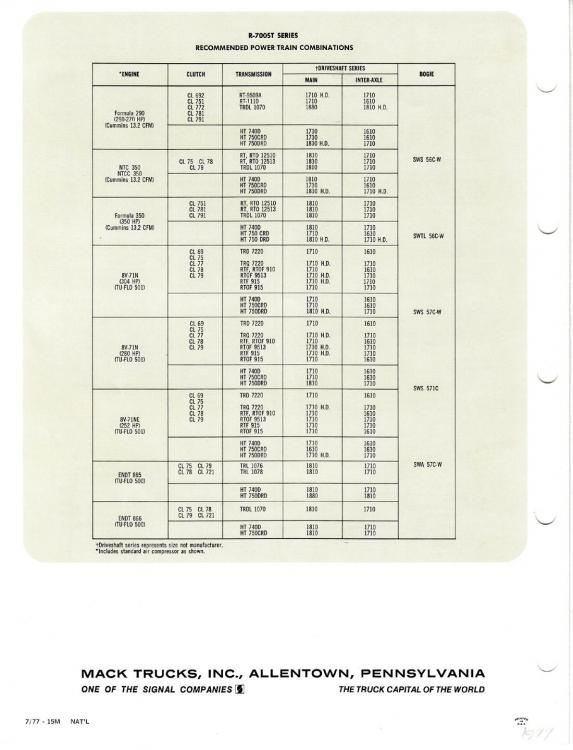
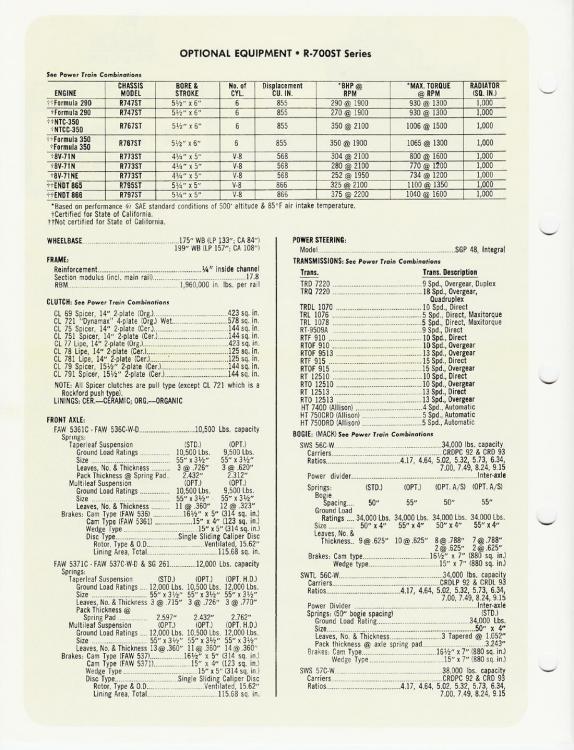
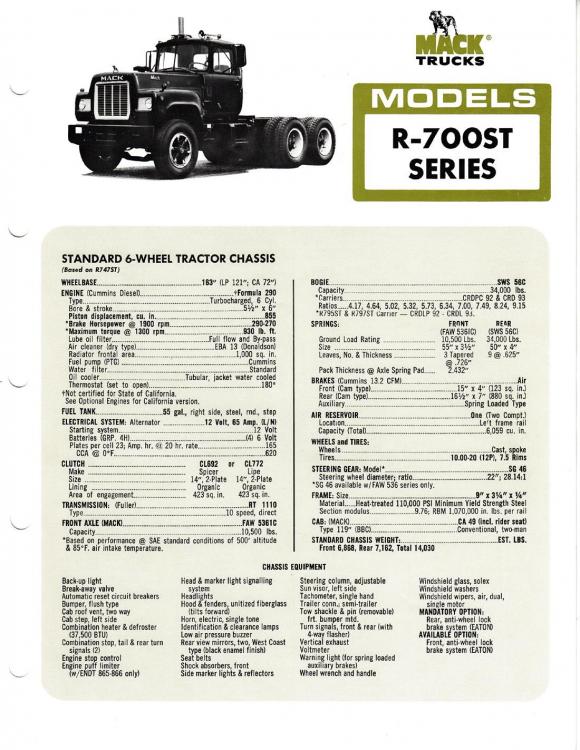

1970 Autocar Holmes 750
in Other Truck Makes
Posted
Thanks. That would be great. As well as being practical and designed to last trucks also had character back then. They all look a bit the same now, like big cars!
Looking forward to the pics but no hurry. I've got several Macks on the bench still!